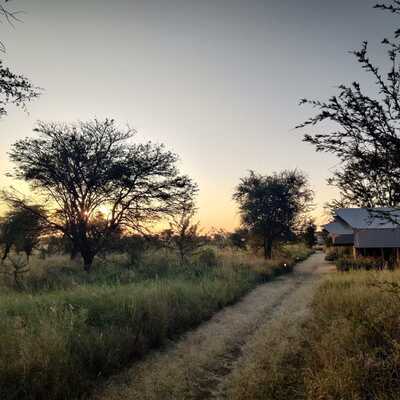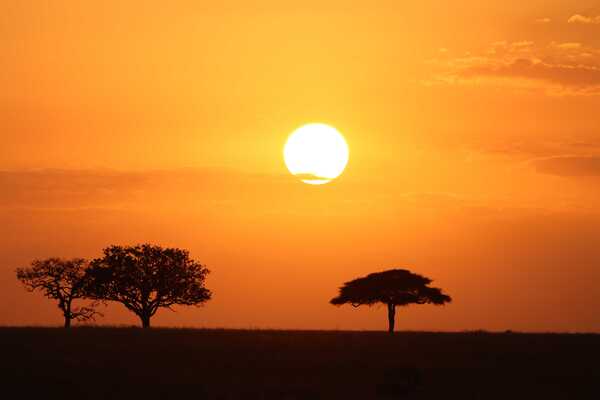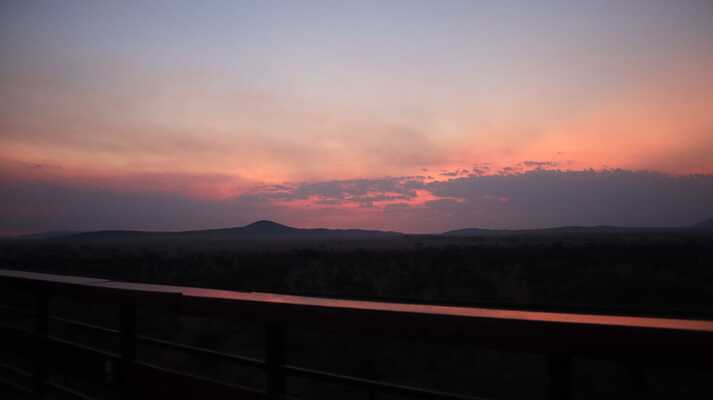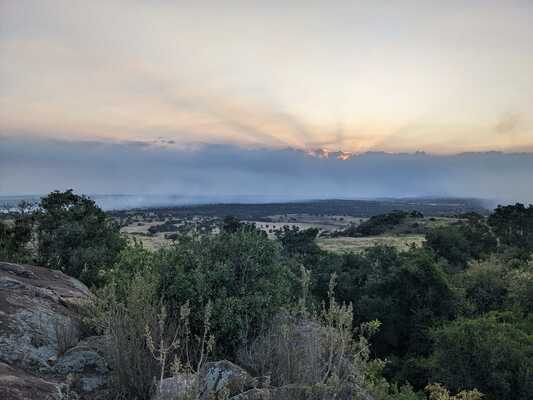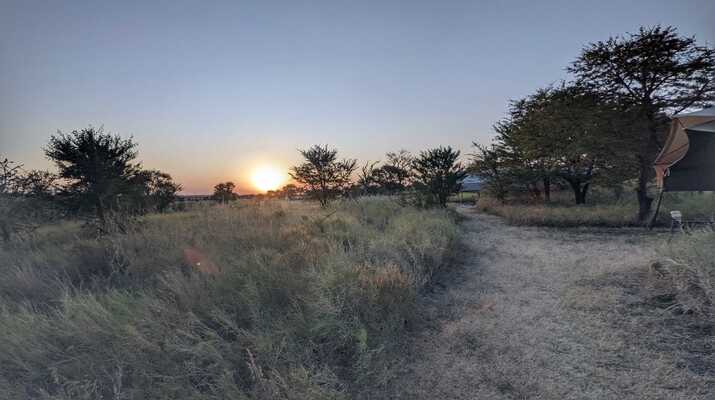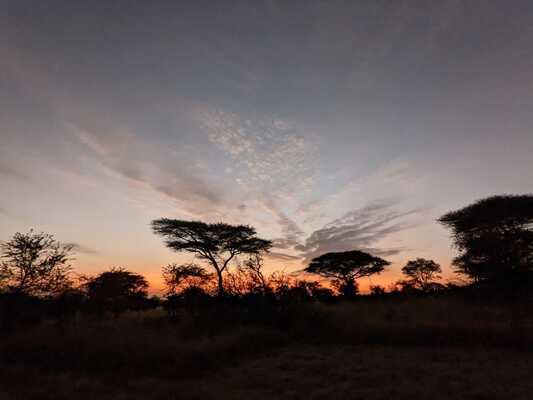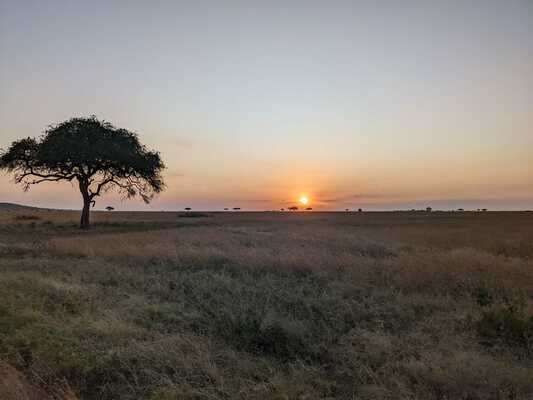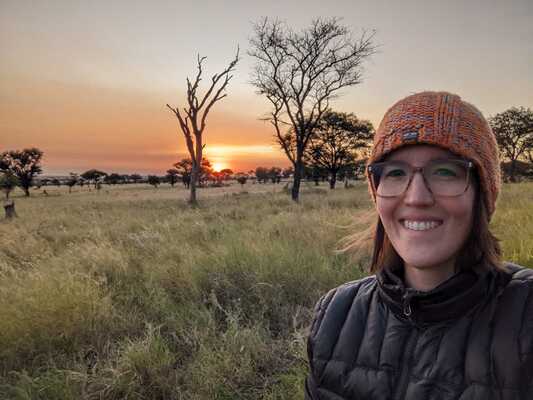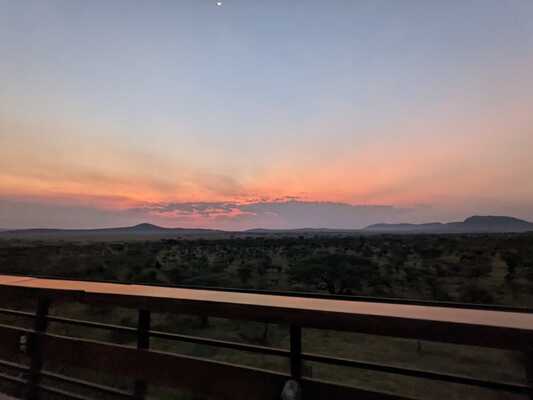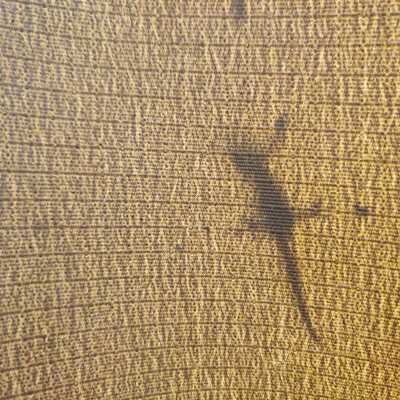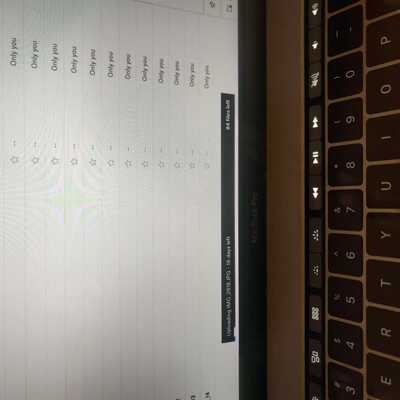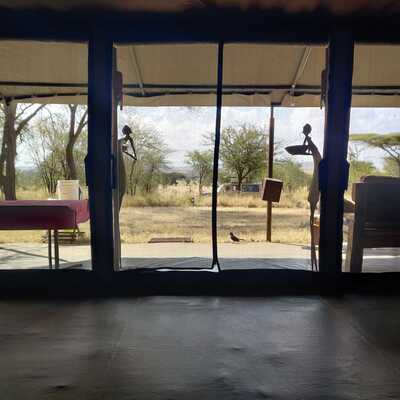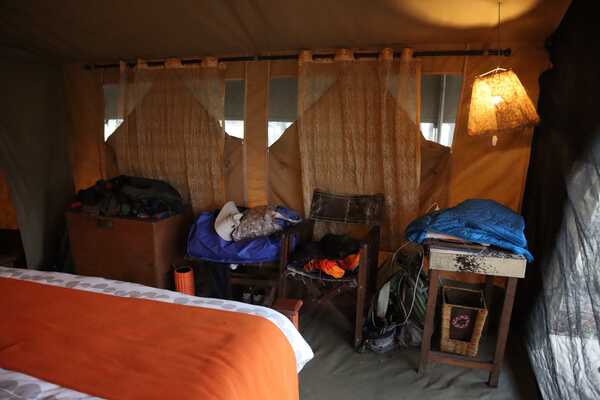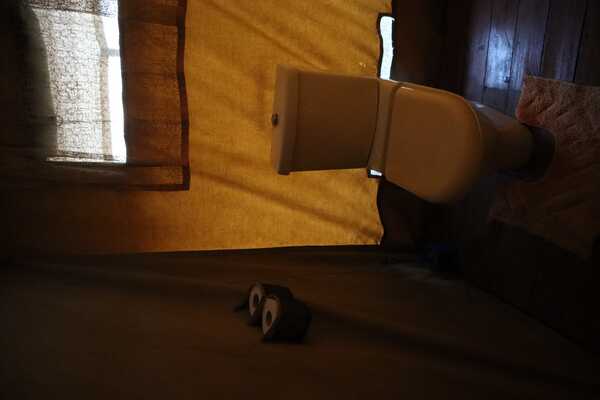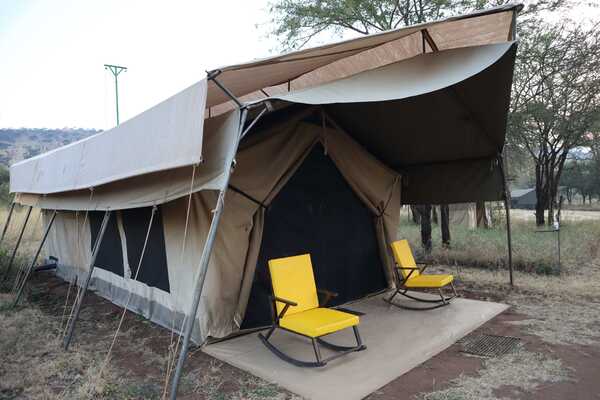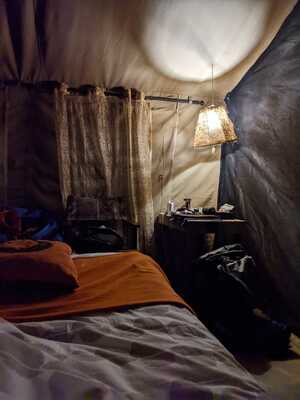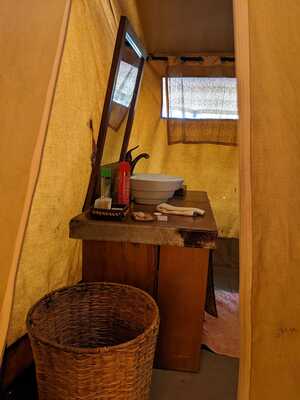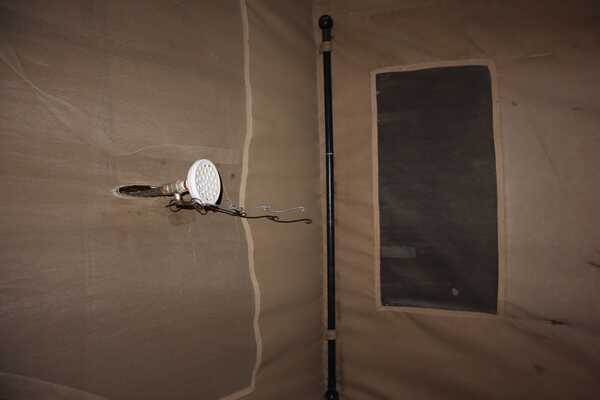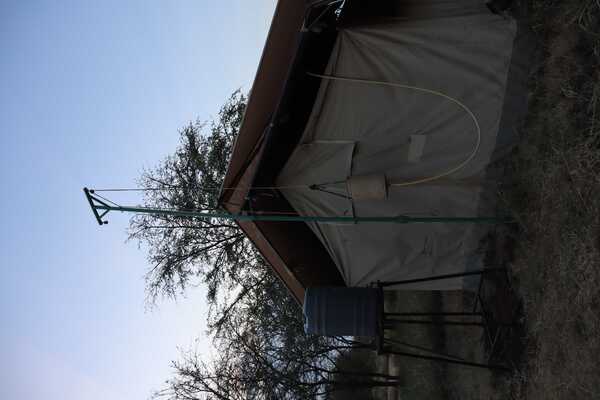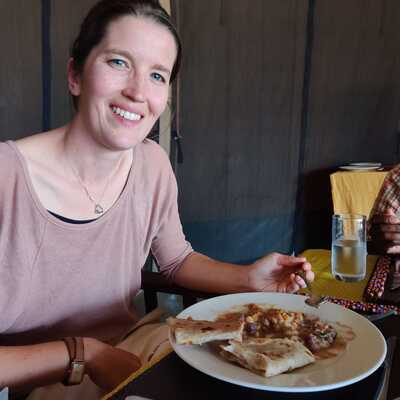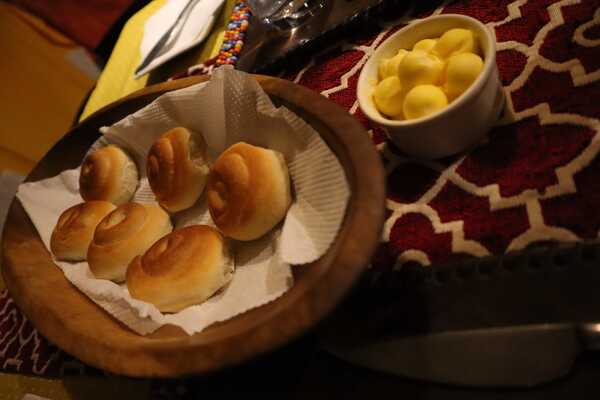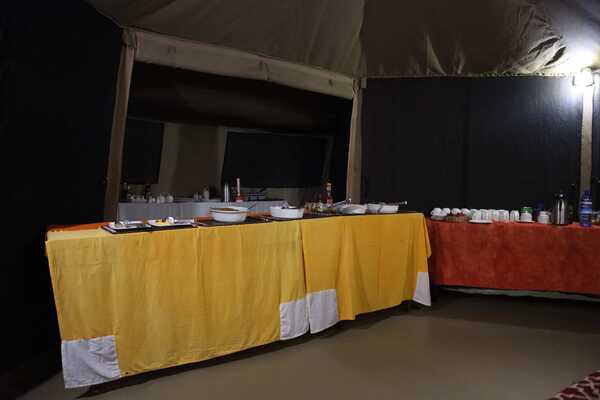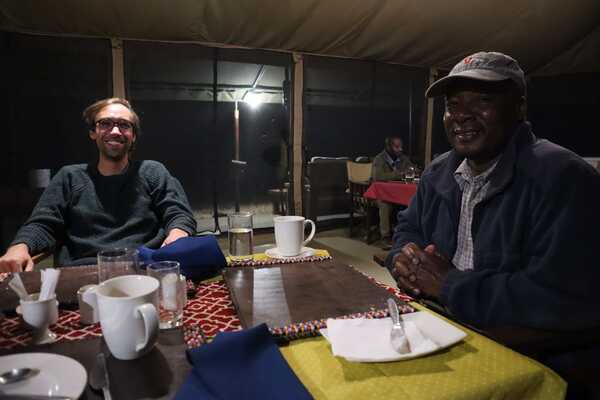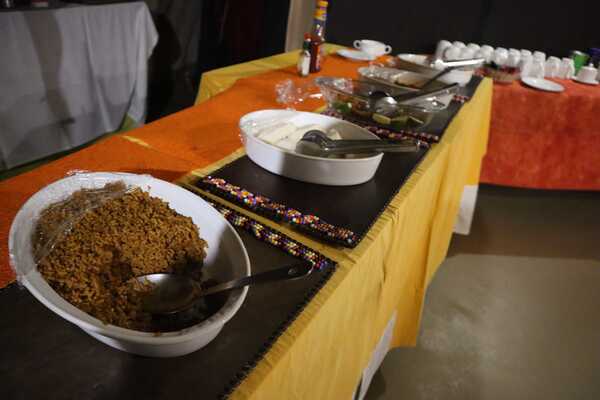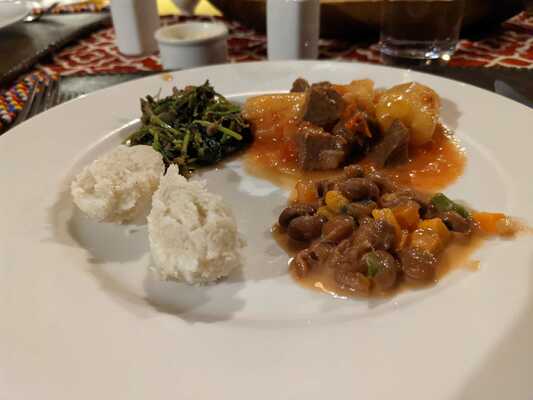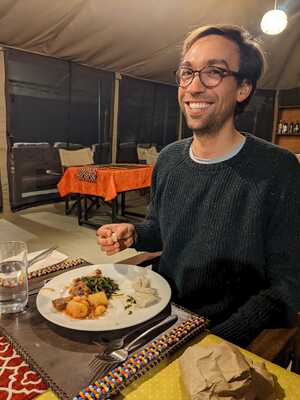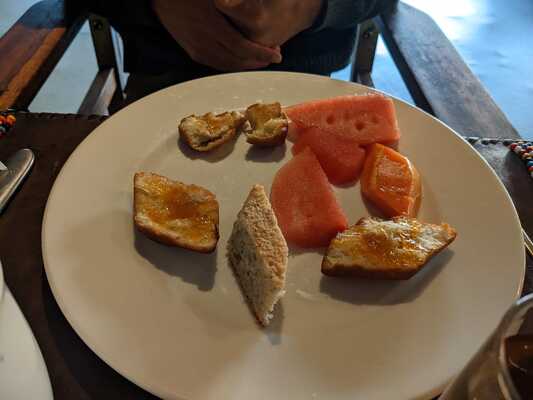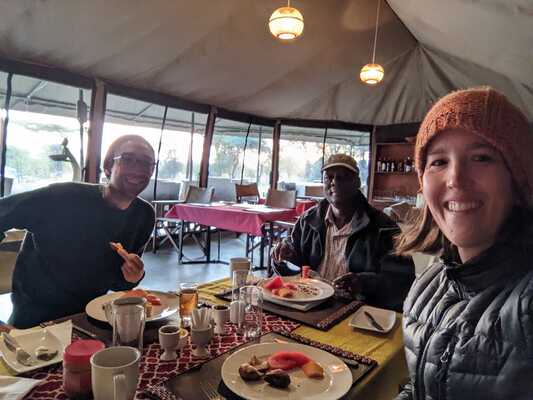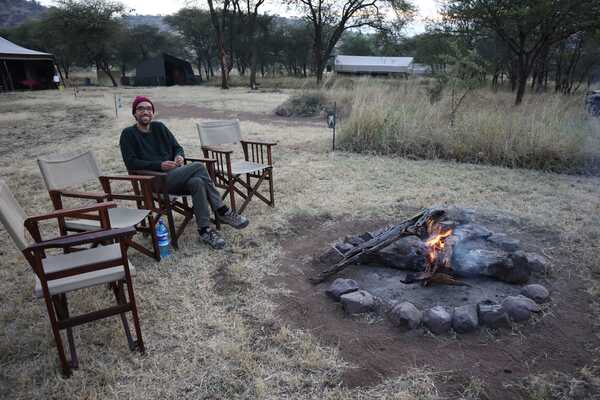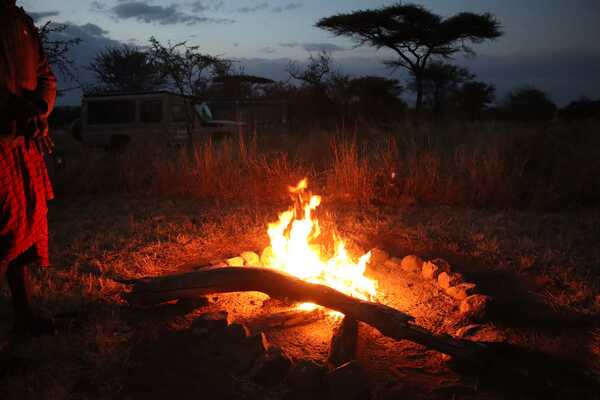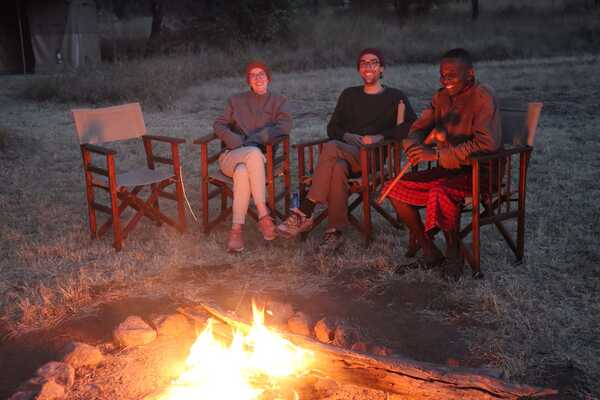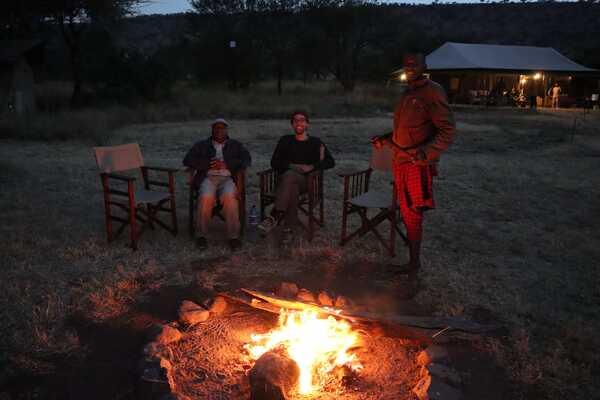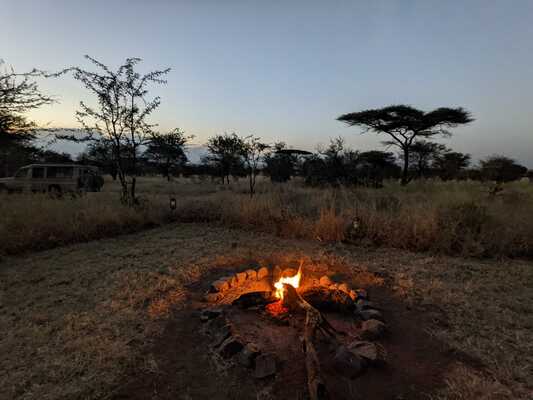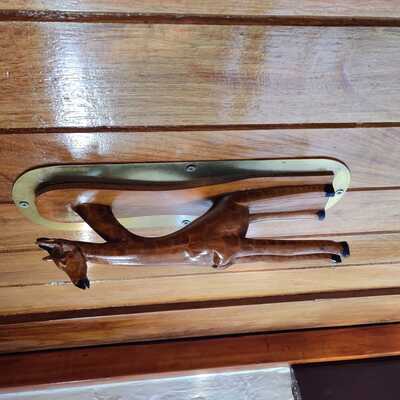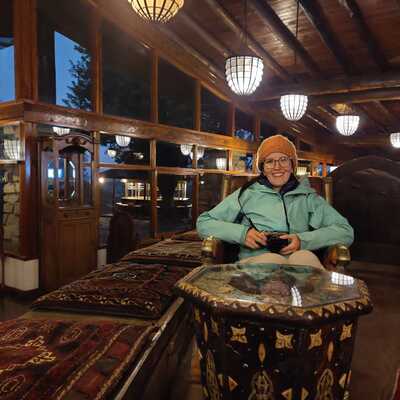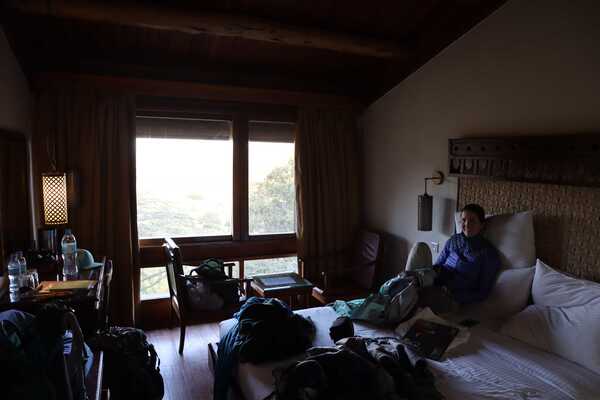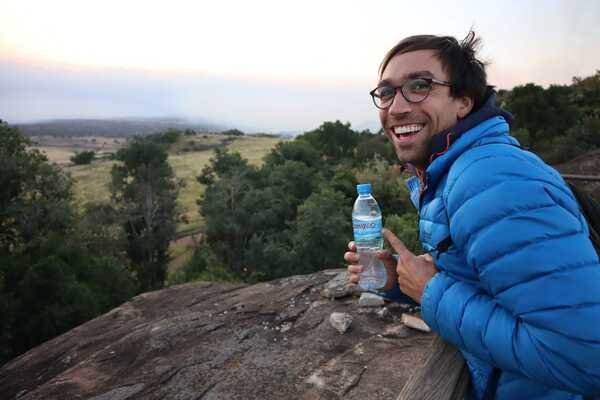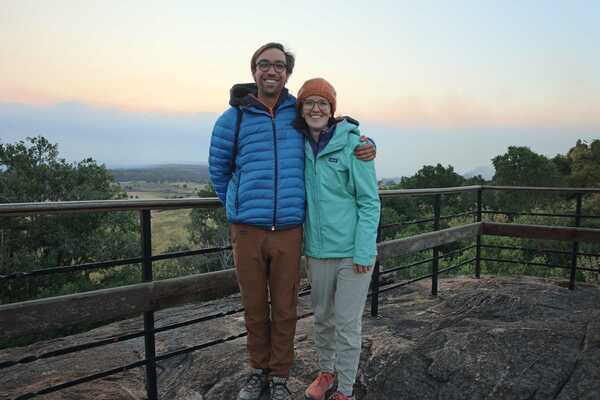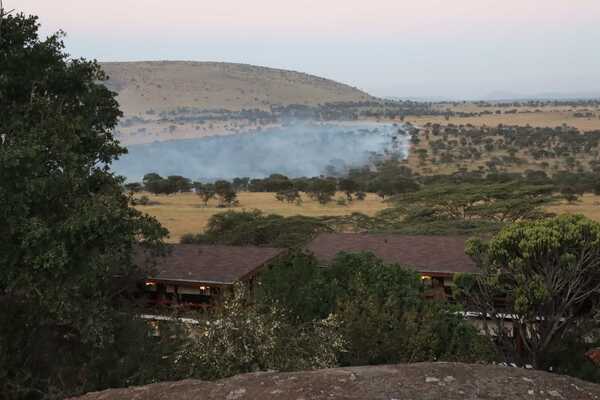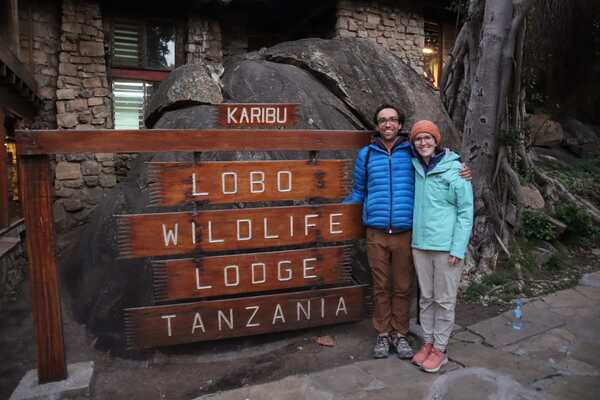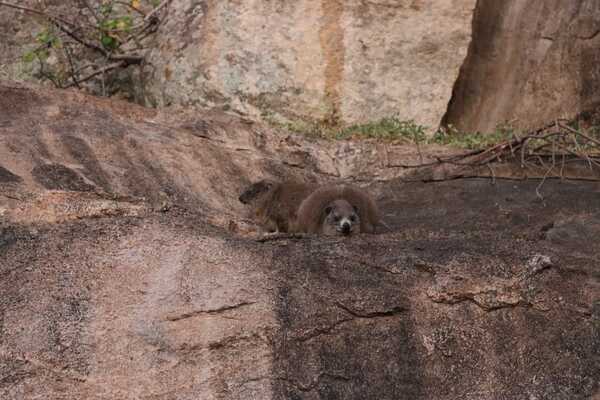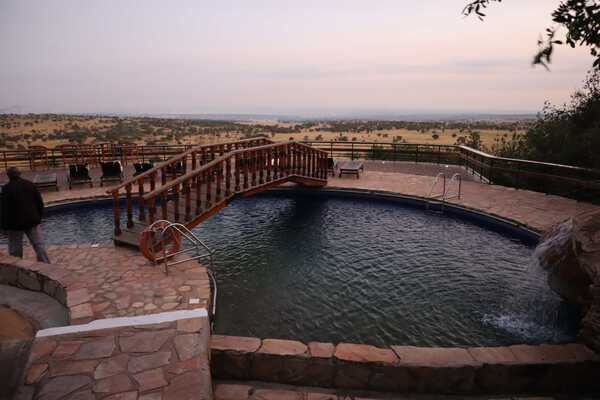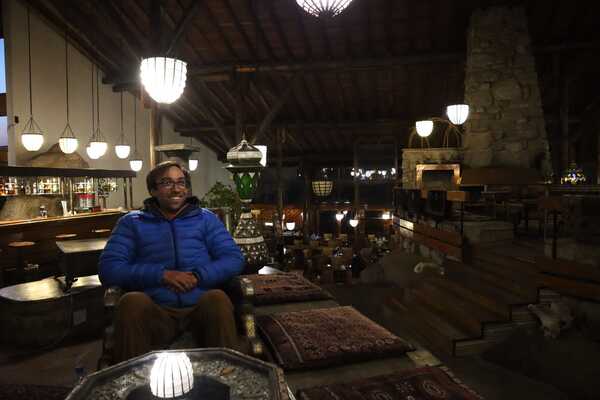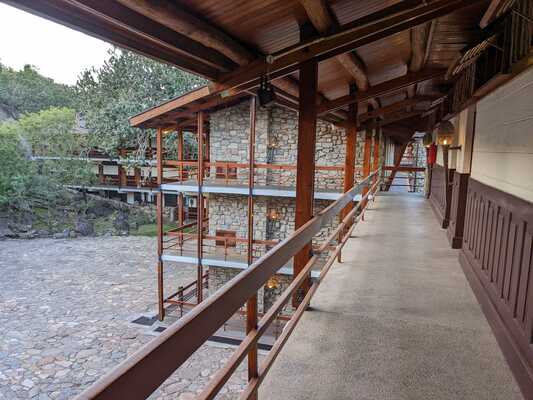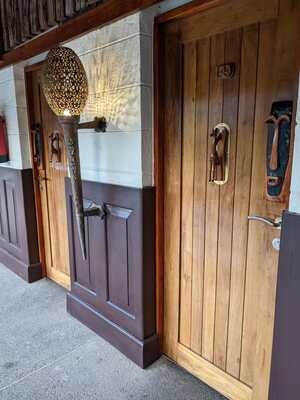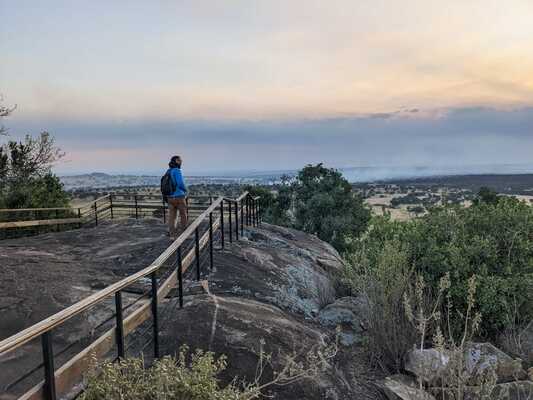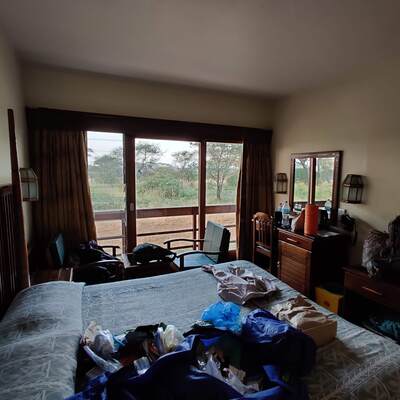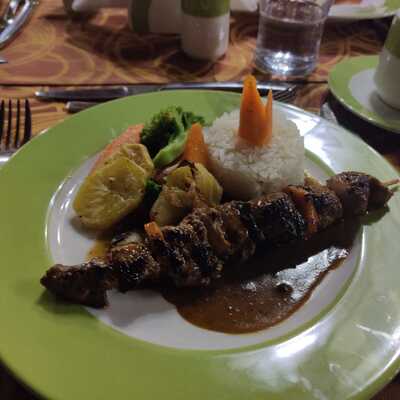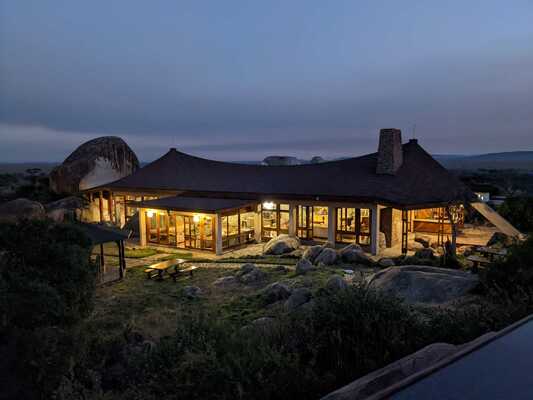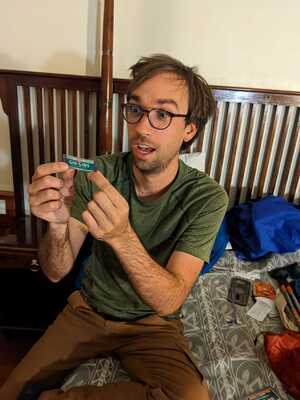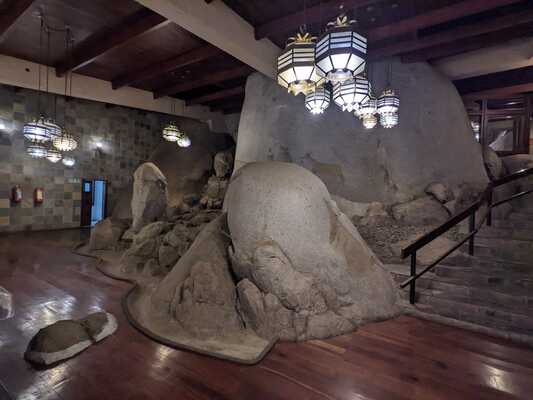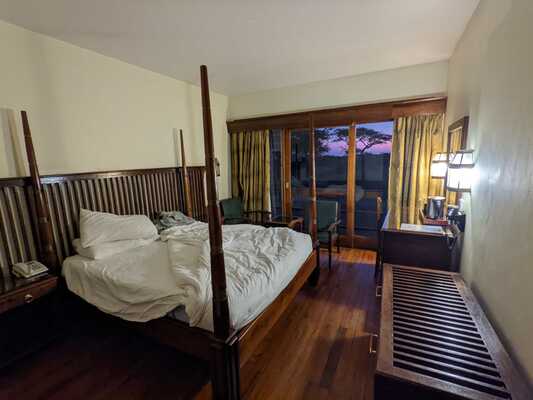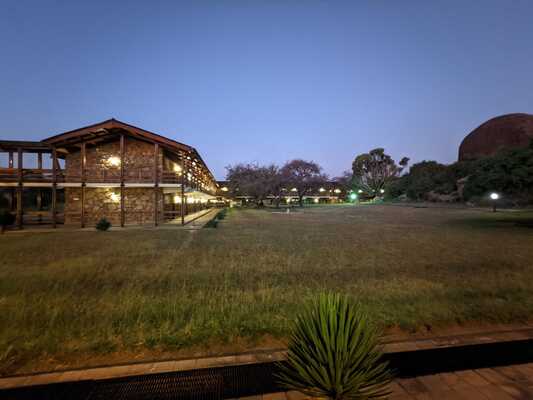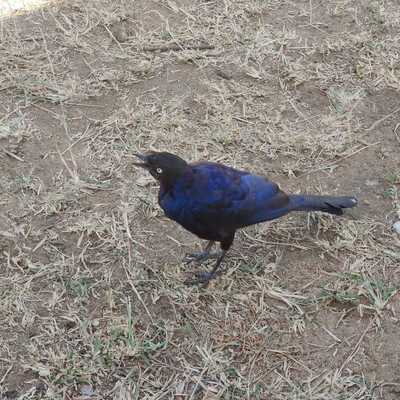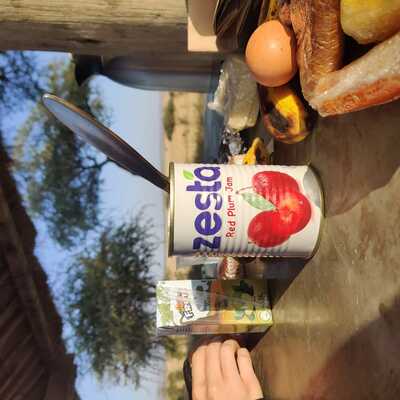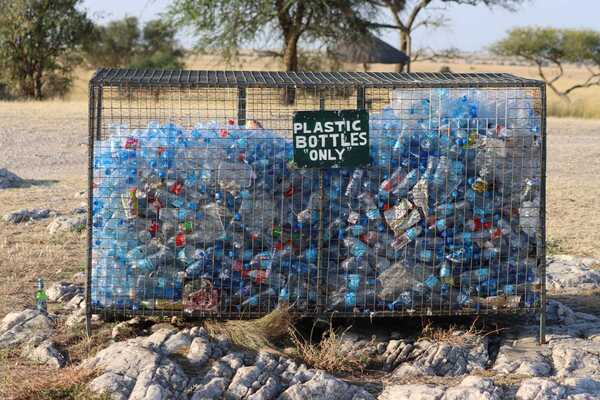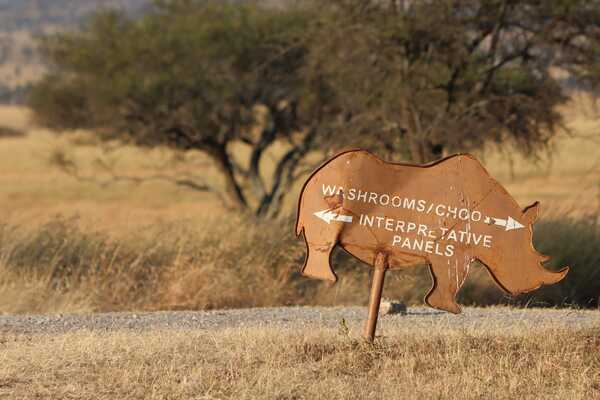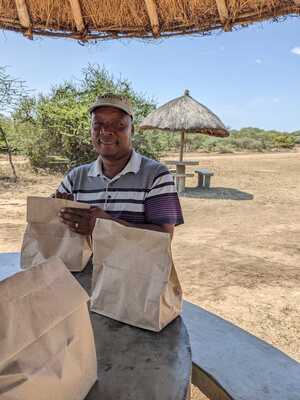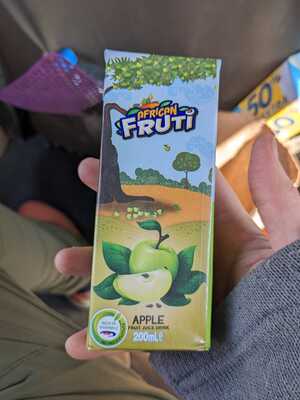The Serengeti: The Safari Experience
Elements of the Serengeti
When I think about the Serengeti, several components come to mind:
- The amazing animals, discussed in the animals and place post
- Brilliant sunrises and sunsets along the flat plains
- The clear night sky filled with millions of stars
- Our unique stays between hotels and tented lodges
- Lobo Lodge
- Osupoko Tented Lodge
- Seronera Lodge
- Multi-course meals and packed lunches that were prepared by our hotels
- Managing our downtime to recharge
- The colonial and hunting history of the park
The Land of Sunrises and Sunsets
The Serengeti is at the equator, so the sun rises and sets every day at approximately the same time. The landscape is dry and straight, except for rolling hills on the edges of our view. Trees are few and far between. Essentially, it creates the ingredients for the best sunrise and sunset viewing.
No one beyond park staff is not allowed to drive inside the Serengeti after 6 pm. This allows the park to monitor for poaching and illegal activity. Sunset is about 6:50 pm, so you are always home to watch it. And they are amazing.
Given that you eat dinner at 7 pm, and are in bed by 8:30 or 9 pm, you wake up at 6 am naturally. Just in time to watch the brilliant colors of the sunrise.
One morning, we even got up and left 40 minutes before the sunrise, watching the brilliant colors of the sky turn from dark blue to bright red, then to the orange of the sunrise, then the bright blue of the fully-risen sun. It was the most incredible sunrise I’ve seen in my life. And I got to experience it with Tim and Honest, our guide, in the Serengeti. It was so incredible.
At Osupoku Camp, I would walk down to the last tent (which was empty) and sit on the rocking chairs watching the sunsets and sunrises alone in quiet. Soaking in the surroundings, just listening to the noise and environment. It was incredibly calming and grounding. It was me trying to remember every moment and aspect of this incredibly special place I’d found myself in. And it gave me some brilliant videos and pictures for which to remember this place.
Watching a Brilliant Night Sky
The Serengeti is a national park in Tanzania. The lands around it are protected conservation lands. Urban areas beyond that are mostly villages, with some towns. The major cities are a several-hours drive away. We were there during the dry season, meaning there was no rain at all. And no clouds.
All this translates into an incredibly dark and clear night sky. Perfect for star watching. I’d already had a fantastic fill during Kilimanjaro, in a dry climate above the clouds. This was a second treat, watching the night sky from the bush of the Serengeti. (The “bush” is how they refer to the rural, wild backcountry.)
At night at the tented camp, I would stand and stare at the stars. Watching the Milky Way and dense collection of stars. With a crowded sky, it is harder to pick out my favorite constellations, as they are crowded with additional stars I’m not used to. Honestly, it is deeply humbling to watch the sky in that way - a reminder of how small you are in this crazy universe and how special it is to be alive.
Eli, the Maasai guide at the camp, and I would watch the sky and compare constellations. Cassiopeia is my favorite - as I use it to determine where the Milky Way is in cities when I cannot see it. Alternatively, Eli uses the same stars to identify north, south, east, and west for navigation. We talked about the differences between shooting stars, satellites, and planes in the night - and how they all had some magic. We could not find any satellites, and few planes fly over that area. However, we would periodically see a shooting star.
Escorts at Night for Walking to Your Tent
All the lodges and tented camps have outdoor areas and central areas that are outside. To ensure that no large animals wander in and that you are safe if they do (as they would be spooked by you and react irrationally), you get an escort at night.
At the tented camp, Eli specifically had the job of escorting us to and from our tent at night, as it was unsafe to walk outside. The animals would not attack you but should be scared off. And, given his background and growing up in rural areas in Tanzania with these same animals, he had the skills to do that in the right way (without a gun, for those wondering.)
The Lodges
While in the Serengeti, we stayed in three different resorts: Lobo Lodge in the northeast part of the park, Osupoku Tented Lodge in the central western part, and Seronera Lodge in the center near the airport. These were very different lodges, and amazing in each of their own regards. I wrote about Osupoko first, as it was such a unique and special experience. Here’s the order of these lodges
- Serengeti Night 1: Lobo Lodge
- Serengeti Night 2 - 5: Osupoko Tented Lodge
- Serengeti Night 6: Seronera Lodge
Osupoko Tented Lodge - Our Home Away From Home
We stayed at Osupoko Tented Lodge for four nights, in the middle of our Serengeti time. It truly became our home away from home, a space we felt excited to come back to with humans we truly enjoyed being around. There was a staff of about 5 people: the head manager and cook, a waiter, a rooms/lodging manager, a security guard at night, and the lodge’s driver. Each was deeply welcoming and open with us, and we all became friends. It turned out that the head manager and waiter were father and son - which we found out on the last day! Beyond the amazing staff, there were a couple of things I’d love to call out specifically.
The Tented Lodge Itself
The entire camp is set up to be semi-permanent, with all the buildings being robust tents. Really, the tents were on wooden platforms with multiple rooms: a front sitting area outside of the tent door, the main bedroom with a desk and closet, and a bathroom with a sink, separate shower, and separate toilet. The whole thing was probably 10’ x 30’, with the ceilings being about 8’ tall - so essentially larger than an NYC studio! It was incredible - all out of a heavy canvas. There were also windows, allowing the tent to air out and heat up during the day, then closing up at night as the temperature dropped.
The front porch had two rocking chairs for us to look out onto the landscape, with hip yellow cushions. At night the cushions needed to be taken inside, otherwise, hyenas would steal one! In fact, they’d even take a shoe if you left it out just for fun. (For the record, the hyenas we saw were more like mangy, chill dogs, not like the mean ones shown in The Lion King!) There were 5 tents on each side of the central welcome area, which had a large dining tent and cooking area.
We stayed in the first tent, which was closest to the dining tent. Since we were the only guests there, I’d walk down to the last tent in our row, pull out the cushions from inside the last tent, and sit there watching either the sunrise or sunset. It was superb.
For internet access, they had a satellite connection that was connected to wireless routers in the camp. It was the most reliable internet we had in Tanzania - in the backcountry of the Serengeti! We also had the best shower experience, with the most reliable hot water. Quite incredible!
A Talking Shower
The showers we took were “talking showers”. This meant that you let the staff know you were going to take a shower. They got hot water and mixed it with the cold water in a tank directly behind your tent. A staff member stands outside the tent, literally telling you when the water was mixed. Then you tell the staff when you are ready to test the water temperature. You try putting your hand in the water from the shower, letting them know to add more or less hot water to get it to your preferred temperature. Then, when you are ready, you take a shower.
Now, this is not a “Hollywood” shower, you can’t let the water run for your entire shower. There are only about 15 liters of water in the tank, so they’d need to refill it. You turn the water on for getting yourself wet, turn it off for soaping, back on for rinsing, and repeat for the number of soaps/rinses you need. During this whole time, the staff member is standing behind you monitoring the water level, so you end up narrating the water on and off the whole time. Tim, of course, needs to do one hair soap and rinse whereas I need to do 2-3, so it was quite funny to see the difference up close. The experience also makes you acutely aware of conserving water - and how much water you use in a single shower.
Tanzanian Food (Finally!)
Throughout our time in Tanzania, we were exclusively served Western food. Since we were the only people staying at the tented lodge, we specifically requested Tanzanian food. It was literally the best food we had in the country, and it felt so right to be eating Tanzanian food while in the Serengeti with a Tanzanian staff.
Much of Tanzania’s food uses ugali as the starch base, which is a polenta served as a large ball. With this, you use your hands to pull off smaller pieces to mix with and soak up sauces and meat to eat. If you’ve had Ethiopian food or Indian food, it is similar where you eat with your hands using injera and naan, respectively, to mix with the main dish’s content. We had ugali every day while we were there, with different types of meat and fish dishes to accompany it. [liver, beef, chicken]
Cooked banana is also a popular dish that we heard about. We mentioned it to the chef and he specially sourced the ingredients once he knew we were interested - getting it from nearby camps which whom they had a positive relationship. With cooked bananas, you use unripe bananas as a major ingredient in a stew, serving a similar role to a potato in the stew as the starch of a stew. We had it in a meat stew, and it was incredible.
Beyond having amazing food, we were also genuinely interested in understanding the people and culture of the place. Many tourists visit Tanzania to hike Kilimanjaro or do a safari without eating a single local meal or venturing out of the bubble of traditional tourism. To be fair, it is a little intimidating as Tanzania is so different from the Western world in plenty of ways and the food is too. Plus, if it’s your first time eating any food like this, it can feel like a lot. Additionally, if you are staying at a larger hotel then you have less agency to change the menu. This circuit with Western food is also the default experience, so you might not even notice that this is happening. We were lucky that we found ourselves in a place with a staff that was able and willing to share their local food with us.
On the last night of our stay there another couple arrived, a German couple on their honeymoon. They were on the traditional safari circuit, doing several parks for a handful of days each. The waiter shared what the meal was and I could tell that the Germans had not seen this yet during their trip. I had also talked to the chef earlier, as we had all become friends, and he also seemed nervous about whether the new clients would like it.
It was buffet style and we had already been chatting, so I immediately in and said “this is the local food from Tanzania, and frankly the best food you will have had on your trip. If not, just blame me. If you’ve had Ethiopian food before, it’s like that where you mix these and eat with your hands.” This immediately gave them both confidence to get a big plate, and reduced some nervousness. At the end of the meal, the husband came up to me sharing that it was indeed amazing food. The chef and I also high-fived after the dinner and I congratulated him also: “you make incredible food, and everyone loved it! I had full confidence that everyone would taste that! Congrats and great job!”
If you visit Tanzania, or any country in Africa on a safari or other tourist circuit, specifically ask for local food. Many restaurants make and serve this food off the menu, and they’d be thrilled to share their own culture with you!
Honest & The Muscle Massage Ball
We had a truly special relationship with our guide, Honest, who was with us for the whole 10 days. We felt that we created a genuine friendship with him - chatting about our homes, families, culture, and more.
It was clear from the beginning that Honest was a positive and easy-going person, who is flexible and also cognizant of those around him. He is deeply empathetic while also being extremely knowledgeable and respectful to everyone, and he has an extremely strong work ethic. We valued him for this on numerous occasions.
One truly defining moment was when he happened to mention that he had some muscle pain in his foot. Of course, he is driving 8-10 hours a day with us in the car, driving a safari jeep with a manual transmission on dirt roads. This was some active driving, where he was frequently shifting and using both feet.
Because I have a long-term back injury, we travel with both a foam roller and a small lightweight ball. Each helps with keeping my body nimble and stretching out any stitches that occur.
I brought the ball and foam roller to dinner after he mentioned he was having pain. He, and frankly the entire camp staff, at first looked at me like I was crazy. Honest humored me and watched my instructions on how to use the ball to help relax the muscles in the bottom of his foot. He tried it for several minutes and admitted that it was helping. I loaned the ball to him for two days, as he used it to relax his muscles. He called it “playing soccer in his tent”, joking that he would be up and jumping around in no time!
In thinking about it now, it struck me how open he was to something truly random and unknown. A small ball helping to relieve muscle pain and increase blood flow is a pretty big jump, but he was flexible to try it. And open enough to it to say that it was helping.
This was one of several moments we had with Honest where we felt truly connected in a deep and lovely way. We will always cherish the time we had with him on the safari, and how he made us feel at home there.
A Campfire aka “Bush TV”
Osupoko has an amazing campfire area in front of the dining tent. They joked that it was “bush TV”, despite having amazing internet! After returning from the day, we would sit there chatting and watching the sky get darker after sunset. It was a fun calm way to end the day. We did that for several days when we were not resting in the tent. It was a lovely gathering spot for folks to hang out, and we frequently chatted with the staff there when they would join us.
Lobo Lodge
Lobo Lodge is in the northwest of the Serengeti, near the Kleins Gate and Lobo airstrip. It is an old-style lodge, built with wood nestled in a rock outcropping. It is one of the oldest lodges in the Serengeti. It is a hotel built for 300+ guests, and we were the only people there that night. Given how COVID basically stopped all tourism, there is still a recovering economy for safaris and you can tell that by the dips in tour groups to areas built for many visitors.
The lodge is decorated as an old hunting lodge: dark wood panels with heavy wooden furniture, animal motifs, and stones embedded into the furniture. The designs also had an Islamic patterning, with beautiful geometric motifs carved and created in the wood.
The lodge is huge - a swimming pool, an overlook for the sunset, and another for the sunrise. A huge dining hall, separate bar, and large reception area. The rooms all have floor-to-ceiling windows looking out on the landscape. Unfortunately, we were there in the winter and the slats from the windows did not fully close - creating an intense breeze.
Like all hotels in Tanzania, they told us the hours for hot water, electricity, and internet. Generally between 6 pm and midnight. The water takes 10-15 minutes of running tap to get warm, then you should be conservative to save the hot water. Finally, the internet is available with electricity but is intermittent at best.
Nonetheless, it was truly a grand entrance to our six nights in the Serengeti and set a majestic setting for the rest of our time there.
Seronera Lodge
This is literally the oldest lodge in the Serengeti, also decorated as a hunting lodge with dark wooden furniture. It had a rooftop viewing area for the landscape and sunrises/sunsets, where we were so close to watering holes that we could watch animals walking to the water, listening to their sounds as the sun set on the horizon.
This lodge is owned by the same group as Lobo Lodge, with many of the same elements. However, this time we certainly were not there alone. It was incredible to see the hotel filled with people and groups, it felt like a hint of the pre-COVID humming of activities between the families, friends, and couples present.
By this point, we felt like good friends with our guide Honest. We spoke about our families, the animals, the different cultures that visit, the politics of the country, the landscape, and so many other things. We openly laughed with ease and joked with one another. It was strange to know that this was the last dinner we’d have with him, after eating with him the whole time. He’d seen Tim sick and helped take care of us. He had shown us his world and what he enjoyed in the Serengeti. We truly enjoyed his company and knew that we would miss him.
Multi-Course Meals & Packed Lunches
One key thing about any vacation is the food - you eat 3+ times a day, and what you eat impacts your energy and mood. On the safari, there are three major meal times: breakfast, lunch, and dinner. Breakfast and dinner are frequently eaten at the hotel in a multi-course meal style. Lunch is almost exclusively a packed box of food for you to take with you on your day of watching animals (or on the plane leaving or on your game drives). Breakfast and dinner were elaborate, and felt like a bit of a harken back to the formal colonial period.
Breakfast had porridge, crepes, and jam, then followed by eggs made as you requested. We often asked for eggs to come with the meal and had them fried to ensure they were fully cooked. This also came with fresh fruit, which was incredible. Pineapple, melon, mango, passion fruit, and others were the freshest fruit we’d ever tried. This was all accompanied by fresh fruit juice, also fresh and amazing.
Dinner was a multi-course meal: soup, main entrée, and dessert. The soup was all sorts of different vegetable soups, whether squash or vegetable or lentil soup. The main entrée was generally a meat-based entrée, with some vegetable sites and a starch. This was followed by fresh fruit, again some of the freshest we’d tried. It was lovely.
Packed lunches meant a collection of these foods in a little to-go cardboard box. This included a juice box (which we came to look forward to and love), hard-boiled eggs, fried chicken pieces, a pancake, muffin, and a fresh piece of fruit. We specifically would request nuts, toasted or roasted.
As big hikers, we are also big snackers. We asked for nuts and additional fresh fruit from the company we were with to help with the midday snacking, which we realized was not included in the meal plan after Kilimanjaro. (We used the same tour company, so it was easy to coordinate with them.)
All that said, the best food was when we were eating Tanzanian food. It was incredible and multifaceted in taste, and helped us understand and love the culture further!
Taking Time to Rest
Tim and I are both highly ambitious people with our time and aspirations for what to accomplish. This extends to how we approach traveling and vacations. However, when you are traveling for 8.5 months, you need to pace yourself. With the safari, we had drastically underestimated how engaged we would be. Frankly, we had thought about this as sitting in a car all day for 8 hours per day. While this is true, this is not a passive travel time. You spend the time staring out of the car at the landscape, looking for animals or actively watching an animal. That level of concentration is more similar to a workday, where you need to “be on” while at work.
We opted to try to have quiet time at night to soak it in. I also would watch the sunrise and sunset quietly to recharge, inviting a very tired Tim who sometimes joined. One day mid-safari, we opted to do a morning drive (which turned into a 7-hour drive) and took the rest of the day off. Just hanging around camp was still a truly unique experience. If you are going to do a safari, or any intense vacation, taking that downtime allows you to recharge and continue soaking up the experience you are in. One thing we needed to remind ourselves is that this is building towards a more sustainable pace and that this was good - trying to reduce our own “fear of missing out” (FOMO) while in the moment.
History of Hunting and Colonialism
The Serengeti was first a place for indigenous tribes and local hunting. Then it was a place of European and American hunting, becoming especially popular in the early 1900s. Now it is a UNESCO World Heritage site and National Park. The history of these elements all comes out in these pieces.
The history of the area and the animals is also deeply tied to hunting and colonialism. For hunting, the language is still leftover from the past, as we would go on “game drives” to find animals, including looking for the ”big 5”, referring to the hardest 5 animals to kill and get their heads mounted.
With colonialism, we were exclusively presented with European and American food in the wilderness of Tanzania and every hotel has porters to help with our bags – including our purse and day backpack. We insisted on carrying our own bags, learning everyone’s names, and talking to people about their own lives. For us, it was important to connect with people on a human-to-human level, not as client-staff.
Beyond this, you only see foreigners in the Serengeti and they almost exclusively have Tanzanian guides. Of course, the Serengeti charges their own country folk about 30% of the cost as a foreigner for the entrance fee and you could camp instead of staying at a fancy hotel. However, this cost is still too steep for most Tanzanians to afford to see their own country’s gem. In fact, guides cannot afford to bring their own families into these areas because of the expense. It is something I have been thinking about since then, that guides have this amazing experience over and over, yet can only describe this to their families through words and cell phone pictures. It seems so very imbalanced.
Nonetheless, we had an incredible experience on the safari and in the Serengeti. It was definitely our favorite part of the trip to date!

